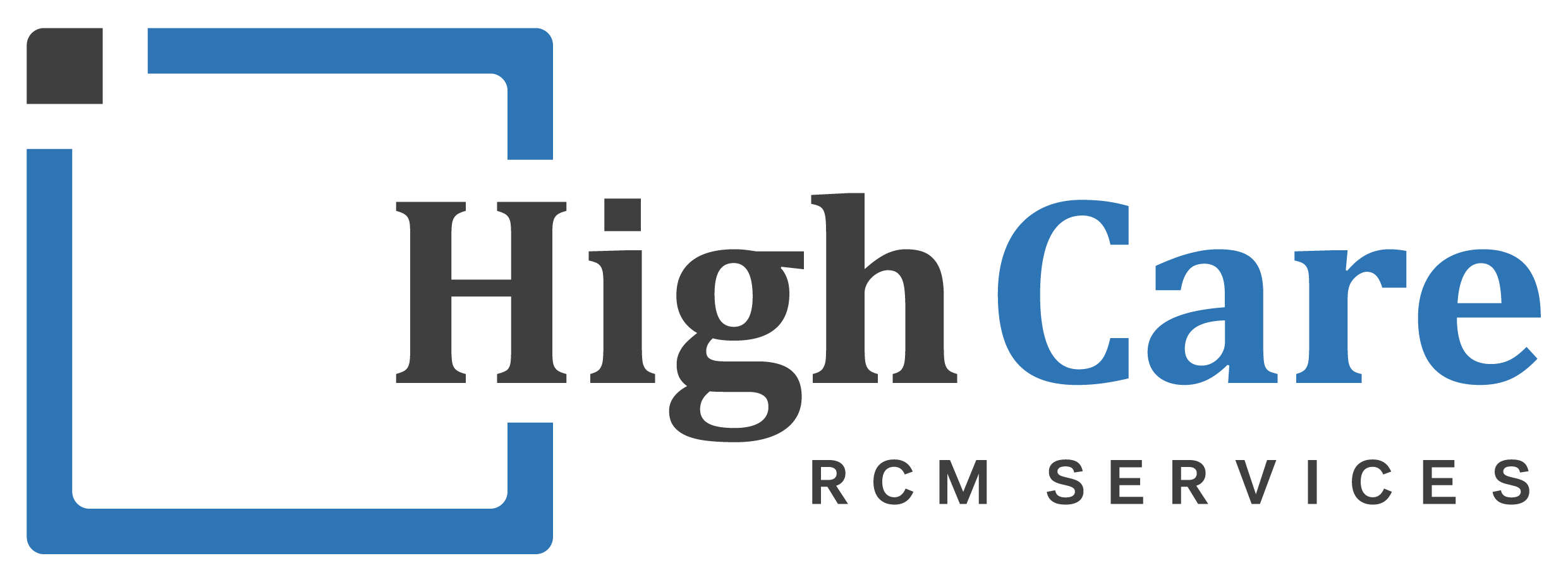- 14, Kathiresan Street, Pallipalayam corner, Kumarapalayam – 638183
Maximizing Reimbursements: Navigating Payer Policies and Negotiating Strategies
High Care RCM
The pursuit of optimal reimbursement rates stands as a primary goal for healthcare organizations. As the financial lifeline of these entities, securing fair compensation for services rendered hinges upon mastering the intricacies of insurance payer policies and deploying effective negotiation strategies. In this comprehensive guide, we will explore the intricacies of maximizing reimbursements by understanding payer policies and negotiation practice.
Understanding Payer Policies: Pillars of Reimbursement Success
Insurance payer policies form the cornerstone of the reimbursement process. These policies outline the rules, regulations, and guidelines that providers must adhere to in order to receive payment for their services. However, deciphering these policies can be a challenging task, as they often come laden with industry-specific jargon and intricate details. Here are some key steps to effectively navigate payer policies:

1. Thorough Research and Familiarization
At the heart of the journey towards successful reimbursement lies a comprehensive understanding of insurance payer policies. These documents serve as a roadmap, delineating the criteria and prerequisites that providers must follow to ensure their claims are processed smoothly. Navigating these intricacies demands a meticulous approach:
Policy Breakdown: Begin by dissecting policy documents with a surgeon’s precision. Pay attention to vital aspects such as covered services, billing codes, documentation prerequisites, and the critical deadlines for claim submissions.
Coding Clarity: Within these policies lie the coding guidelines set forth by the payer. Immersing yourself in the nuances of ICD-10, CPT, and HCPCS codes is paramount, as accurate coding is the linchpin of proper reimbursement.
2. Staying Abreast of Policy Changes
In the realm of healthcare, change is the only constant. Policies continually evolve to align with shifting medical practices, legal mandates, and regulatory adjustments. Staying abreast of these changes is not just beneficial – it’s imperative:
Regular Audits: Engage in routine policy audits to ensure that your organization’s practices remain in harmony with the latest guidelines. Regular self-assessment safeguards against potential non-compliance.
Educational Initiatives: Invest in ongoing education for your coding and billing teams. Keeping them informed about policy revisions ensures they’re equipped to navigate the evolving landscape effectively.
3. Coding Accuracy and Documentation Excellence
Accurate coding and comprehensive documentation stand as the pillars for successful claims reimbursement. These elements collectively ensure that the services rendered are accurately represented and adequately justified:
Training and Certification: Invest in the professional development of your coding team. Equipped with the necessary training and certifications, they can enhance accuracy and adherence to coding standards.
Real-Time Documentation: Encourage providers to document services in real time. This practice prevents crucial details from being inadvertently omitted due to memory lapse and ensures accurate representation.
Negotiation Strategies: Securing Favorable Reimbursement Rates
1. Data-Driven Approach
Negotiations present an opportune moment to wield data as your most potent weapon. Provide tangible evidence that paints a compelling picture of your organization’s value proposition:
Clinical Outcomes: Highlight positive patient outcomes and quality of care metrics that substantiate your organization’s commitment to excellence. A track record of success speaks volumes.
Patient Satisfaction: Shine a light on high patient satisfaction scores, underscoring the positive experiences your services consistently deliver.
2. Network Adequacy and Patient Access
Understanding the payer’s perspective on a robust healthcare network can be leveraged to advocate for the significance of your inclusion:
Patient Access: Emphasize the necessity of offering patients a diverse range of healthcare options. Position your organization as a critical contributor to the payer’s network.
Geographic Coverage: Showcase your organization’s extensive geographic coverage, bolstering the payer’s network adequacy and patient convenience.
3. Competitor Analysis for Effective Positioning
Undertake thorough research into the reimbursement rates of your peers to glean insights into strategic market positioning:
Benchmarking: Gather intelligence on the reimbursement rates of other healthcare providers in your region offering similar services. This knowledge helps you strategically position your organization’s services as both competitively priced and value-driven.
Value Proposition: Utilize this information to craft a compelling value proposition that distinguishes your organization from the competition and highlights your unique strengths.
4. The Power of Collaborative Negotiations
Approaching negotiations with a collaborative mindset rather than a confrontational stance can yield more fruitful results:
Win-Win Solutions: Strive to engineer solutions that cater to both the payer’s financial interests and your organization’s needs. The negotiation process should be a partnership, not a battleground.
Partnership Development: The foundation of collaboration begins with establishing a rapport. Cultivating a positive and cooperative relationship with payers can lead to more productive negotiations in the long run.
5. Technological Advantage in Negotiations
Leveraging technology can be a game-changer during negotiations, bolstering your organization’s position:
Efficient Claims Processing: Showcase how your organization’s advanced technology expedites claims processing, translating into reduced administrative costs for the payer and enhanced efficiency overall.
Data Analytics: Utilize data analytics to demonstrate your cost-efficiency and potential for generating financial savings for the payer. Tangible data insights can significantly sway negotiation outcomes.
High Care RCM Services understands the intricacies of navigating payer policies and negotiation strategies, presenting a trusted partner in the journey towards maximizing reimbursements. With an in-depth grasp of insurance payer policies, our approach is rooted in thorough research, ongoing education, and the meticulous practice of accurate coding and documentation. By aligning with the latest industry guidelines, we ensure your claims are processed smoothly, mitigating compliance risks and securing your rightful reimbursements.
Through collaborative negotiations, we aim to engineer solutions that benefit both your organization and payers, transforming the process into a partnership that yields mutually beneficial results. Let us navigate the complexities, decode the policies, and negotiate on your behalf, allowing you to focus on what truly matters – delivering exceptional care to your patients.
Contact us to redefine your organization’s financial landscape.

